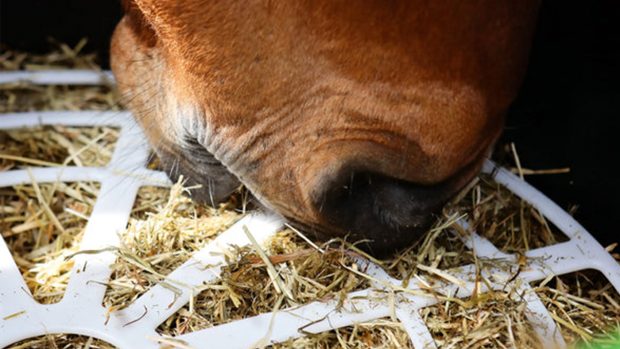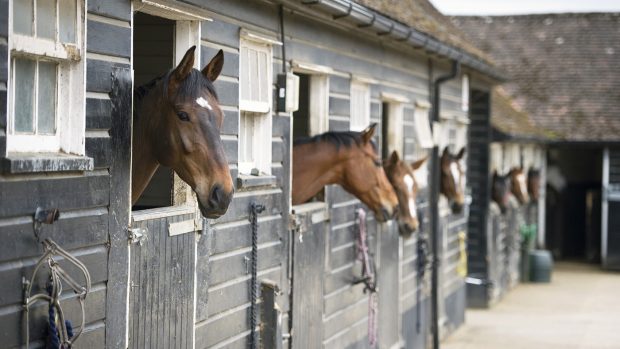Horse & Hound speaks to equine nutrition experts to help a reader who wants to know how to go about feeding a horse on box rest…
Q: My 14.3hh Welsh cob is on box rest with restricted exercise in-hand while recovering from a suspensory ligament injury. I know horses should trickle feed, but he hoovers up whatever he is given very quickly.
He has a dust allergy so is fed high-fibre haylage. A 15kg bag is supposed to last a 500kg horse for three to five days, but we have trouble eeking it out longer than two and a half — despite using small-hole haynets.
His current regime is: 7am small haylage net (approx ¾kg lasts about 45 mins); 10am snacker ball with approx 750g high-fibre cubes (lasts about an hour and a half); 1pm medium haylage net (approx 1-2kg); 5pm large scoop Dengie HiFi Lite, two carrots, medium haylage net (1-2 kg); 9pm approx 2kg haylage.
We are just about managing to keep his weight under control. Is there an alternative low-calorie regime that would give him more munching time?
SV, Hants
H&H asked nutritionists from Winergy and Blue Chip for their advice…
“It sounds as though you are doing a good job of controlling your horse’s calorie intake while trying to keep him munching and as amused as possible,” said Clare Barfoot from Winergy.
“There are only a couple more things to consider. As your horse is sensitivity to dust, feeding soaked hay would avoid respiratory irritation, while offering fewer calories than haylage.”
Clare suggested sourcing some “mature, stemmy hay”, which will be lower in calories.
“You should soak it for at least 16 hours before feeding to increase the leaching of water-soluble carbohydrate,” she said. “This will maximise the reduction in calories.”
Clare pointed out that this horse’s current feeding regime is low on vitamins and minerals, which could be provided by adding a supplement or low-calorie balancer to the diet.
“Alternatively you could try a fibre-based feed that has optimum levels of vitamins and minerals such as Winergy Equilibrium Low Energy. This will provide plenty of fibre to keep him busy and still keep your horse’s diet balanced,” she said. “Because of its short-chopped form, it takes longer to eat than cubes and mix.”
Vicky Ridgeway, Blue Chip’s technical manager, stressed the importance of maintaining a normal foraging time while on box rest and a restricted diet.
“This horse’s diet has obviously been well planned to achieve this and many measures to slow his eating down have been taken,” said Vicky. “He should be receiving 1.5-2 per cent of his bodyweight in dry matter daily and I estimate his current diet provides 7.03kg of dry matter, which is acceptable for a good doer on box rest.”
Vicky also noted the importance of ensuring digestive health in this situation with a probiotic or prebiotic in his diet.
“These can be found in Blue Chip Lami-light, a diet feed balancer scientifically formulated to help equines low weight as part of a calorie-controlled diet,” she said. “It is low in calories, starch and sugar.”
This article was first published in Horse & Hound (12 August, ’10)




